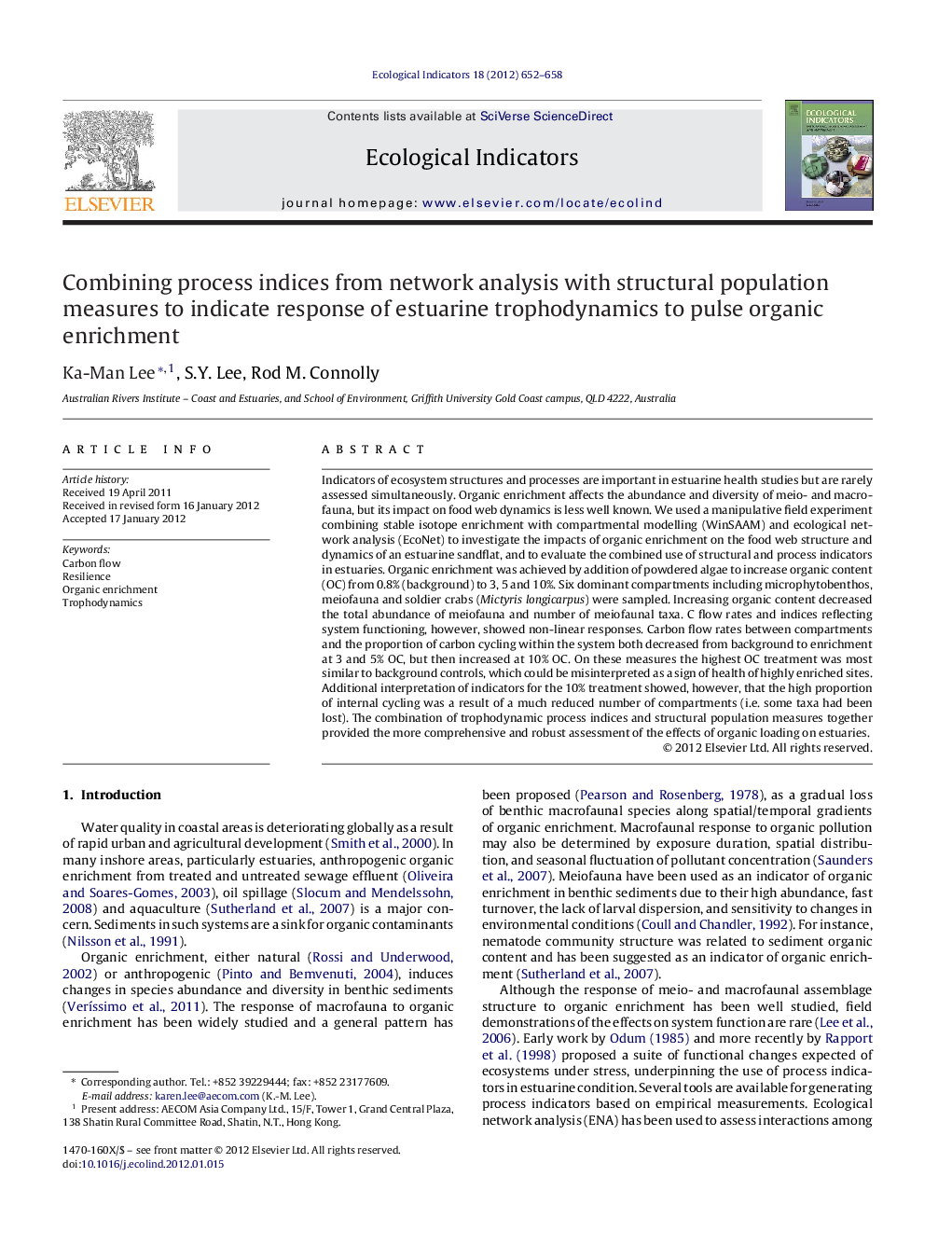| Article ID | Journal | Published Year | Pages | File Type |
|---|---|---|---|---|
| 4373822 | Ecological Indicators | 2012 | 7 Pages |
Indicators of ecosystem structures and processes are important in estuarine health studies but are rarely assessed simultaneously. Organic enrichment affects the abundance and diversity of meio- and macrofauna, but its impact on food web dynamics is less well known. We used a manipulative field experiment combining stable isotope enrichment with compartmental modelling (WinSAAM) and ecological network analysis (EcoNet) to investigate the impacts of organic enrichment on the food web structure and dynamics of an estuarine sandflat, and to evaluate the combined use of structural and process indicators in estuaries. Organic enrichment was achieved by addition of powdered algae to increase organic content (OC) from 0.8% (background) to 3, 5 and 10%. Six dominant compartments including microphytobenthos, meiofauna and soldier crabs (Mictyris longicarpus) were sampled. Increasing organic content decreased the total abundance of meiofauna and number of meiofaunal taxa. C flow rates and indices reflecting system functioning, however, showed non-linear responses. Carbon flow rates between compartments and the proportion of carbon cycling within the system both decreased from background to enrichment at 3 and 5% OC, but then increased at 10% OC. On these measures the highest OC treatment was most similar to background controls, which could be misinterpreted as a sign of health of highly enriched sites. Additional interpretation of indicators for the 10% treatment showed, however, that the high proportion of internal cycling was a result of a much reduced number of compartments (i.e. some taxa had been lost). The combination of trophodynamic process indices and structural population measures together provided the more comprehensive and robust assessment of the effects of organic loading on estuaries.
▸ First field manipulative study of pulse organic enrichment on sandflat C flow. ▸ Combined use of 13C tracer, compartmental modelling and ecological network analysis. ▸ High sediment organic content resulted in less meiofaunal individual and taxa. ▸ Functional response of sandflats did not change linearly across enrichment levels. ▸ Resilience of the sandflat decreased in response to organic enrichment.
